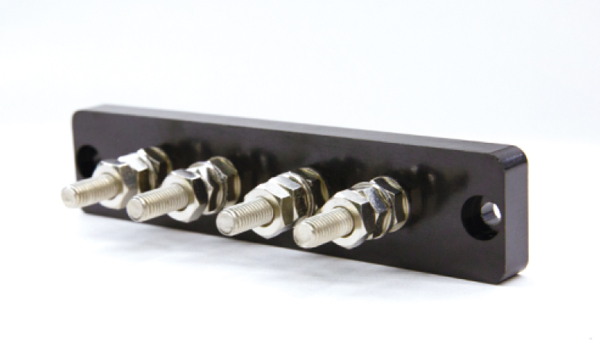At present, the application of power supply terminal board in electronic equipment has become a trend, and the power supply terminal board devices themselves are gradually increasing, and can carry more power. With the increase of the size of power supply terminal board, their importance in equipment function is more and more prominent, and they also play an increasingly important role in ensuring product characteristics.
The continuous improvement of the circuit board technology makes the current that the power terminal board installed on the panel can carry much higher. At present, it has broken through the limit of 110A, far exceeding the level of previous products, which makes it more complex to use which power terminal board in the design process to meet the system requirements. In addition, there are different methods to measure performance parameters in different regions, and even the nominal parameters given for the same product are quite different. Therefore, it is very important to understand these differences in order to achieve long-term reliability and ensure low cost.
Engineers also need to consider another factor that is often overlooked, that is, marketing considerations. Generally, the power terminal board is visible to users, so the marketing department often hopes that the product can match the color and style of the whole system in appearance.
The following details the important factors that affect the selection of power terminal board.
Power handling factor
One of the first factors to consider is the power processing capability of the device. Simply reading the data book does not guarantee accurate comparative data. Engineers need to understand how the product performance data listed in the manual are tested and determined.
At present, UL, IEC, CSA, DIN and other institutions do not have a unified standard when determining the power and performance specifications of power terminal board products. Users need to understand the differences between UL and IEC specifications. The specifications of power terminal board products manufactured in Europe adopt IEC standards, while products manufactured in the United States adopt UL standards. The difference between the two standards is very large. Engineers who don't know the measurement method of product specifications will take considerable risks, because the selected devices may not reach the required power level, or the specifications of the selected devices far exceed the design requirements. In Europe, the current rating of devices is determined by monitoring the temperature of the metal conductor as the current increases. When the temperature of the metal pin is 45 ℃ higher than the ambient temperature, the measuring personnel will take the current as the rated current value of the device. Another item of IEC specification is the allowable current value, which is 80% of the current. Different from this, UL standard will make 90% of the current value when the metal conductor temperature is 30 ℃ higher than the ambient temperature as the current nominal value of the device. Therefore, the temperature of the metal conductor is a very important factor in all applications. This is more important for industrial equipment. Because industrial equipment usually needs to work in the environment with temperature up to 80 ℃. If the temperature of the power terminal board is 30 ℃ or 45 ℃ higher than this temperature, the temperature of the power terminal board will exceed 100 ℃. According to the type of nominal value and insulating materials adopted by the selected devices, the products work at a current lower than the rated value, so as to ensure that they can work reliably within the desired temperature range. Sometimes, the materials suitable for compact packaging devices may not meet the heat dissipation requirements well, so the current of such power terminal board devices is much lower than the rated value.


National Hotline:
024-85632500
E-mail: sy_txt@163.com
Add: A, No. 73, South Central Street, Shenyang Economic and Technological Development Zone